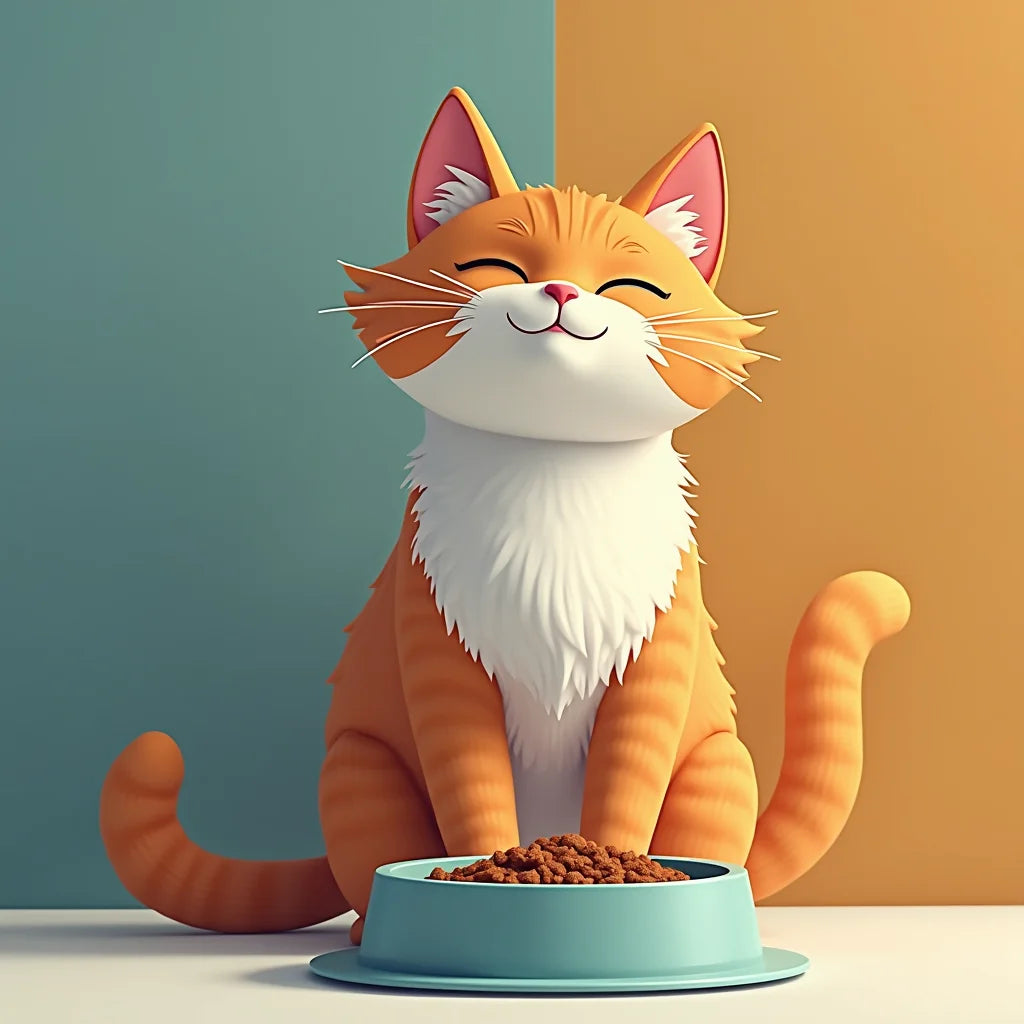
Cat Nutrition Myths That Harm Feline Health and Mood
Updated on: 2025-10-27
Table of Contents
- Cat Care Basics for a Calm Home
- Cat Nutrition: Feeding Routines and Food Choices
- Choosing Cat Litter and a Clean Setup
- How-To Steps: Litter Box Training for Your Cat
- Feline Communication: Why Do Cats Purr?
- FAQ About Cat Care
Cat Care Basics for a Calm Home
A cat thrives on predictability, gentle handling, and a safe environment. Within the first days at home, offer a quiet room where your kitty can adjust without pressure. Keep food, fresh water, and the litter area separate so your feline does not feel conflicted about where to eat and where to eliminate. Small, consistent routines tend to build confidence and reduce stress for a cat of any age.
Place a soft resting spot away from heavy foot traffic and loud appliances. If your kitty seems nervous, consider adding a hiding option like a covered bed or a cardboard box with a blanket. Keep visitors and other pets at a respectful distance in the beginning. Patience during this stage can make every future lesson—especially litter habits and mealtime—easier for your cat.
If you wish to explore thoughtful essentials such as bowls, mats, or gentle toys at your own pace, you might find the Collections helpful for ideas.
Cat Nutrition: Feeding Routines and Food Choices
A steady routine helps your cat feel secure around food. Try to feed at similar times each day and keep portions consistent for your feline’s age and activity level. Place the bowl in a calm spot away from the litter area. Fresh water should be available at all times, ideally in a sturdy bowl or fountain that your kitty can reach without stress.
Best Cat Food for Indoor Cats
When you are choosing cat food for an indoor lifestyle, it may be helpful to focus on balanced nutrition that supports energy without excess calories. Indoor cats may benefit from recipes that consider weight management and hairball control. Read labels carefully and look for complete and balanced formulas. If you prefer a variety, consider a mix of textures—some cats respond well to a combination of wet and dry food served at routine times.
Every cat is unique. Some cats do well with simple ingredient lists while others enjoy a little rotation in flavors. Introduce any new cat food gradually over several days to avoid upsetting your kitty’s routine and appetite.
How Often Should I Feed My Cat?
Many adult cats do well with two measured meals a day. Some kittens and very active cats may prefer smaller, more frequent meals. A consistent schedule helps your cat feel secure and reduces food-seeking behavior between meals. If you use timed feeders or slow-feeding bowls, observe your kitty for comfort and adjust as needed to keep mealtime low stress.
For extra reading and gentle tips about daily routines and enrichment, the store Blog may offer ideas to try at home.
Choosing Cat Litter and a Clean Setup
Cleanliness encourages good litter habits. Scoop daily when possible, top up litter as needed, and fully refresh on a regular rhythm. Many cats appreciate a larger box with low sides on at least one edge to make entry easy. If your home has multiple levels or larger spaces, consider an extra box so your cat never has to search too far. A calm, private placement away from noisy appliances or heavy traffic supports a relaxed routine.
If your kitty is sensitive to scent or texture, try unscented varieties and test a couple of options gently over time. Some cats prefer fine clumping litter; others accept pellet styles. Keep any changes gradual to protect your cat’s confidence with their box.
If you wish to review store details or background before choosing supplies, you may appreciate the concise overview on the About page.
How to Train a Cat to Use a Litter Box
Start by placing the box in a calm, easy-to-reach location. Keep it far from food and water. Encourage supervised visits after meals and naps. If your cat circles, sniffs, or scratches the floor, guide them gently to the box. Offer quiet praise if they use it. Avoid punishment—calm consistency is often the best teacher.
How-To Steps: Litter Box Training for Your Cat
Below are clear, simple steps to help your cat feel comfortable with the litter area. These steps align with best practices for a low-stress experience.
Step 1: Prepare a welcoming litter zone
Choose a roomy box and a litter type your feline can comfortably dig in. Place a mat to catch stray granules. Keep the area bright enough for safety but not exposed to heavy noise. If possible, provide one box per cat plus one extra.
Step 2: Introduce gently and consistently
Guide your kitty to the box after meals, naps, and play. Allow sniffing and exploration without pressure. If your cat seems unsure, scratch the surface lightly with your fingers to demonstrate.
Step 3: Reinforce calm success
When your cat uses the box, offer a soft voice and a gentle pet if they enjoy touch. Keep the moment relaxed. Quiet encouragement helps your cat associate the box with safety.
Step 4: Maintain a clean routine
Scoop daily and refresh litter on a steady schedule. A clean box invites repeat use and reduces odors. If accidents occur, clean the area thoroughly with an enzymatic approach that leaves no lingering scent patterns behind.
Step 5: Adjust placement or litter type if needed
If your feline avoids the box, try a second box or a different texture. Move the box slightly toward areas your cat prefers, then gradually shift it to the desired final location. Small, steady changes are often most successful.
For a quick look at store offerings that may support your setup, you can visit the Home page for navigation to categories and helpful guides.
Feline Communication: Why Do Cats Purr?
Purring is one of the most familiar sounds a cat makes, yet it can express several states. Cats may purr when they feel content and safe, especially during gentle petting or relaxed rest. Some cats also purr when seeking comfort, such as during a stressful moment. Observing the whole picture—ears, tail, posture, and context—helps clarify the meaning for your kitty.
Look for soft eyes, slow blinks, and a loose body when purring accompanies contentment. If your feline is purring while crouched with a tucked tail or showing restlessness, it may be a request for space or reassurance. Over time, you will learn your cat’s unique “purr dictionary” and respond in a way that supports trust.
FAQ About Cat Care
Why do cats purr?
Cats may purr when they feel calm and secure, but they may also purr when seeking comfort in uncertain situations. To understand your cat’s purr, consider the full context: body language, environment, and recent events. Gentle observation will help you respond in a way that suits your cat’s needs.
How often should I feed my cat?
Many adult cats do well with two measured meals per day, while kittens and very active cats may prefer smaller, more frequent meals. Keep the routine steady, offer fresh water at all times, and watch your cat’s comfort and energy levels to guide any adjustments.
What is the best cat food for indoor cats?
Indoor cats often do well with complete and balanced recipes that support steady energy and easy maintenance. Consider formulas that note weight management or hairball control if those concerns apply to your household. Introduce any new food gradually, and aim for a feeding schedule that your cat can trust day after day.
How can I choose the right cat litter?
Many cats prefer unscented, fine-textured clumping litter. If your feline is sensitive, change types gradually and observe comfort over several days. A larger box, daily scooping, and a quiet placement can matter as much as the litter itself in keeping your kitty confident and consistent.

Sage is a design-obsessed cat parent focused on turning “pet gear” into purposeful décor. At MeowHaus, Sage covers styling guides, enrichment setups, and buyer’s tips to help you ditch carpet towers for furniture-grade pieces. Off the blog, you’ll find Sage scouting textures, testing scratchables, and sipping espresso under a sun-soaked window ledge.
